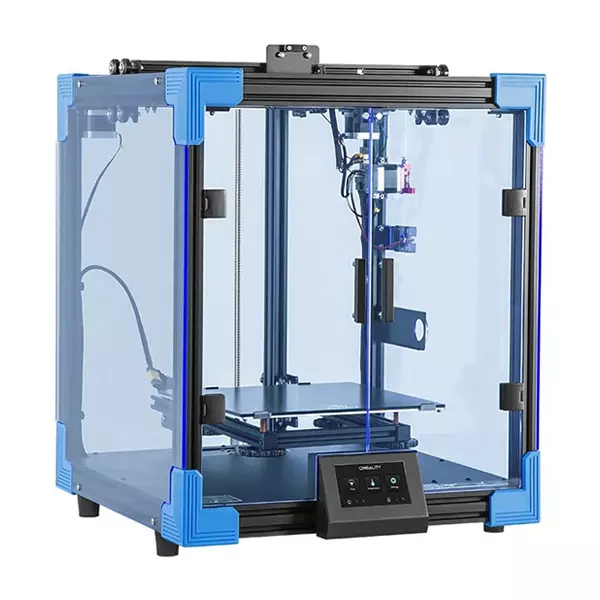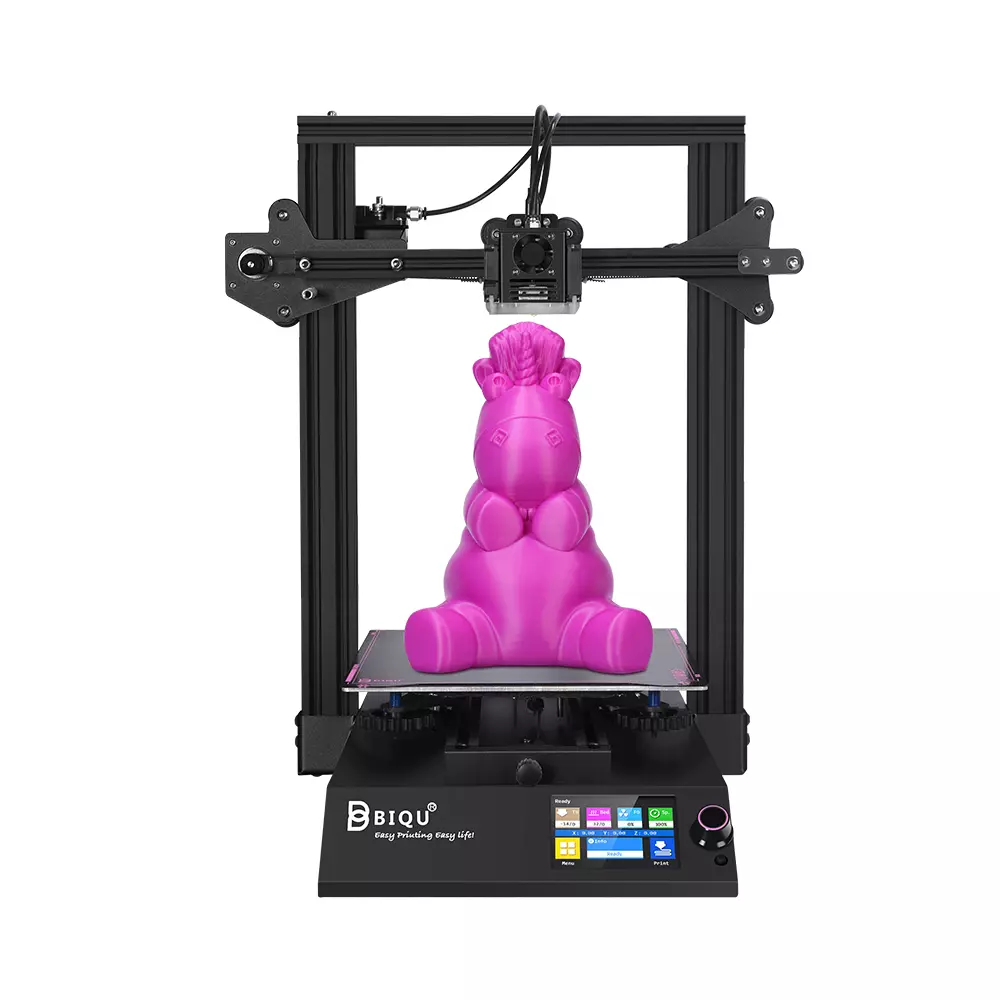Compare Ender 6 vs BIQU B1
Comparison between the best 3D printers
Choose the best 3D printer at the best price. The cheapest 3D printers are here.
Buy a 3D printer here with 3D Fila.
 |
 |
|
| Model | Ender 6[BUY Ender 6] |
BIQU B1 |
| Printing Material | Filament | Filament |
| Buy Filament for Creality 3D Ender 6 | Buy Filament forBigTreeTech BIQU B1 | |
| Estimated price | $499,00 | $269,00 |
| Manufacturer | Creality 3D | BigTreeTech |
| Release Year | 2020 | 2020 |
| Print Volume [mm] | 250x250x400 | 235x235x270 |
| Printer Size [mm] | 495x495x650 | 412x402x492 |
| Weight [kg] | 22 | 8,00 |
| Power Loss Recovery | YES | YES |
| Enclosed printer | YES | NO |
| Bed Leveling | Manual | Manual |
| Filament End Sensor | YES | YES |
| Bed type | Heated | Heated |
| Power supply system | Bowden | Bowden |
| Standard nozzle | 0,4 | 0,4 |
| Maximum Nozzle Temperature [°C] | 260 | 250 |
| Maximum Bed Temperature [°C] | 100 | 100 |
| Maximum printing speed [mm/s] | 150 | 100 |
| Filament holder | YES | YES |
| Camera for supervision | NO | NO |
| Recommended filaments | PLA, TPU, ABS, PETG | PLA, TPU, ABS, PETG |
| Recommended slicers | Cura, Simplify, Slic3r | Cura, Simplify, Slic3r |
| Maximum Resolution [mm] | 0,1 | 0,1 |
| Processor | 32 bits | 32 Bits BTT SKR V 1.4 |
| Display | Touchscreen TFT 4,3'' | Touchscreen TFT 3,5'' |
| Power Supply | 24V / 504W | 24V / 360W |
| Connectivity | SD / USB | SD / USB |
| Operating systems | Windows, Mac, Linux | Windows, Mac, Linux |
| Date of registration in the system | 2021-04-15 | 2021-04-14 |
| Release date | 2020 | 2020 |
| Extra features | The Creality Ender 6 stands out in the world of 3D printers with its CoreXY system, offering fast and high-quality prints. With a robust design, it has acrylic panels to protect against air currents, optimizing the printing of materials that require higher temperatures. It features a generic Creality hotend, effective up to ~240°C. Its differentials include 10mm GATES belts, promoting stability at high speeds, and a 360W power supply for reliable performance. The machine also has an intuitive user interface through a 4.3-inch touchscreen. | The BIQU B1 is an advanced 3D printer with a silent 32-bit BTT SKR V1.4 motherboard and ARM Cortex-M3 CPU, offering DIY interfaces (I2C, SPI, WiFi) and dual Z-axis. Its dual BTT B1 TFT35 V3.0 operating system allows real-time monitoring and multiple printing modes, including G-code visualization effects. It stands out for its BIQU SSS (Super Spring Steel), ensuring easy model adhesion and simplified removal, with the possibility of using it on both sides. It includes a filament sensor, automatically pausing printing in case of filament breakage. The multicolored RGB lights integrated into the hotend allow you to view the printing status even at night. Additional notes include the need for a BIQU-specific Type-C cable and extra interfaces for smart filament sensor and BL Touch. |
| Support for multiple colors and materials (AMS and CFS) | NO | NO |
Notes * |
||
| Cost-benefit | 7 / 10 | 6 / 10 |
| Hardware | 2.5 / 10 | 2 / 10 |
| Tela | . | . |
| Print volume | 4 / 10 | 3 / 10 |
| Performance | 1 / 10 | 0 / 10 |
| [BUY Ender 6] |
Conclusion |
| In comparing the Ender 6 and the BIQU B1 3D printers, several key aspects stand out that may influence your decision based on your specific needs and budget. The Ender 6, manufactured by Creality 3D, offers a larger print volume and features such as an enclosed design, which can enhance temperature control and improve the quality of prints, especially with materials like ABS and PETG. With a maximum printing speed of 150 mm/s and a robust build, it provides high stability and fast print capabilities. Additionally, its user-friendly touchscreen interface and power recovery features add to its usability. On the other hand, the BIQU B1, though slightly smaller in size and print volume, brings innovations such as a silent 32-bit motherboard, dual Z-axis support, and advanced monitoring features. It is particularly useful for users interested in customization and a versatile printing experience, thanks to its dual-sided print surface and improved adhesion features. When considering price, the Ender 6 is positioned as a higher-end option, which reflects its capabilities and enhanced performance metrics. In contrast, the BIQU B1 stands out as a more affordable alternative with effective features for more casual or beginner users. In conclusion, if you seek higher performance and are willing to invest more, the Ender 6 could be the better choice, especially for serious hobbyists or professionals looking for reliability in diverse materials. However, if budget is a priority and you value innovative features at a lower price point, the BIQU B1 offers solid performance for entry-level to intermediate users. Ultimately, your choice should depend on your specific requirements, such as intended use, material compatibility, and budget constraints. |

